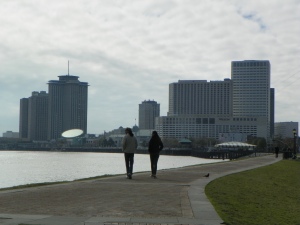On the outskirts of Wickliffe, Kentucky, I came to a high bluff along the river where there was a scenic overlook of the Mississippi River and a huge cross known as the Fort Jefferson Memorial Cross, which is located at the confluence of the Mississippi and Ohio Rivers. In the nearby town, the Ballard County Courthouse stood out as a historic and attractive building which I stopped to get a photograph of.
Afternoon at the Confluence, Wickliffe, KY
PhotographyOn the outskirts of Wickliffe, Kentucky, I came to a high bluff along the river where there was a scenic overlook of the Mississippi River and a huge cross known as the Fort Jefferson Memorial Cross, which is located at the confluence of the Mississippi and Ohio Rivers. In the nearby town, the Ballard County Courthouse stood out as a historic and attractive building which I stopped to get a photograph of.














You must be logged in to post a comment.